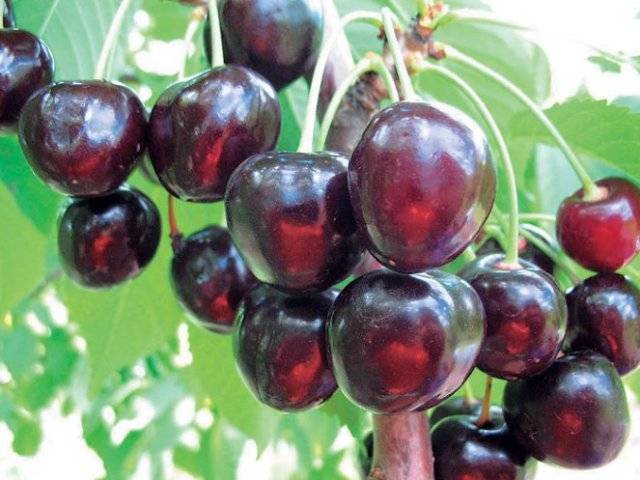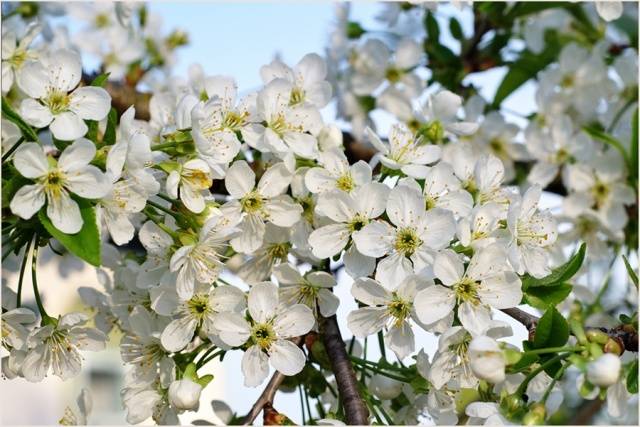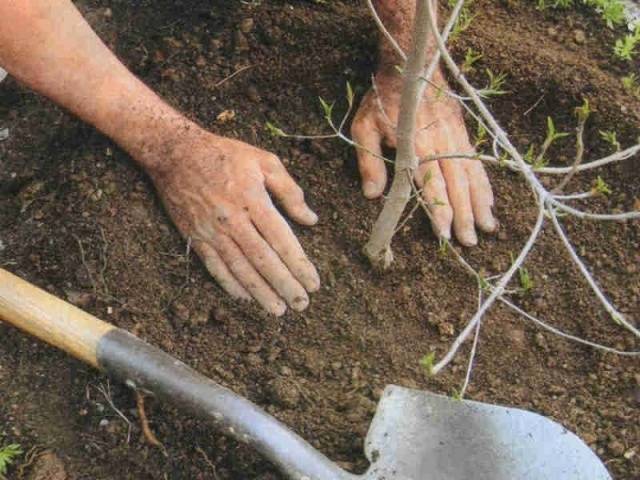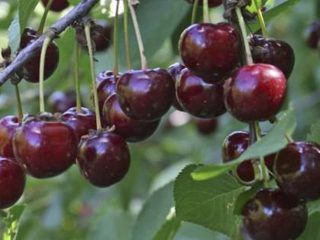Content
In recent years, coccomycosis has been destroying cherry orchards throughout the former Soviet Union. But previously this crop occupied 27% of fruit plantings and was second in number only to the apple tree. Creating new varieties resistant to fungal diseases is the main task of breeders. The Morozovka cherry, created at the end of the last century, rarely suffers from coccomycosis and withstands frosts well.
History of selection
The Morozovka dessert cherry variety was sent to State Variety Testing in 1988. Its author is T.V. Morozova, who works at the Institute of Horticulture named after. Michurina. The parent variety is the common Vladimir cherry, the seedling of which was treated with a chemical mutagen.
Description of culture
Morozovka forms a small tree, which usually does not grow higher than 2.5 m. Raised strong branches form a wide crown of medium density.On the trunk and old shoots the bark is light brown. Young branches are grayish-green.
The jagged green leaves of the Morozovka cherry are oval, highly elongated, and medium in size. The petiole is long, anthocyanin colored.
The white flowers are large, with rounded petals. Morozovka, like the parent variety Vladimirskaya, belong to griots - cherries with dark red berries, pulp and juice. The weight of the fruit is about 5 g, the taste is dessert, sweet, with a barely noticeable sourness. The shape of the berry is round, the ventral seam is hardly noticeable, and there are no integumentary points. The flesh of the Morozovka cherry is dense, with a lot of juice. The oval seed is medium and separates well from the berry. Most of the fruits are set on bouquet branches, much less - on annual growth.
Morozovka cherries are successfully grown in the North-Western, Central, Lower Volga, Middle Volga, North Caucasus and Central Black Earth regions.
Brief characteristics of the variety
Morozovka is considered one of the best varieties of domestic cherry selection. Delicious berries, high resistance to unfavorable growing conditions and diseases make it a crop suitable for farming and private gardens.
Drought resistance, winter hardiness
You can water Morozovka, even in hot summer, several times a season - the variety has high drought resistance. High winter hardiness allows it to be grown in areas with temperate and cool climates. According to gardeners' reviews of Morozovka cherries, flower buds can freeze only in the north of the Black Earth Region. Wood can withstand low temperatures well.
Pollination, flowering period and ripening time
The Morozovka cherry blossoms in the middle period.This allows most regions to avoid late frosts and wait for bees and other pollinating insects to fly out. The Morozovka cherry harvest begins in the second half of July.
The best pollinators are Griot Michurinsky, Zhukovskaya, Lebedyanskaya. Morozovka cherry is self-sterile; without other varieties, only 5% of the possible number of berries will set.
Productivity, fruiting
Morozovka is early-bearing, it gives a harvest in the 3-4th season after planting. Berries appear on it every year, unless the flower buds freeze in the northern regions.
The fruits have a dessert taste and are highly transportable. They are easily separated from the stalk; mechanized harvesting by shaking is possible. Therefore, despite conflicting reviews about columnar cherries, Morozovka is convenient to grow in this form on large farms.
In Michurinsk, the variety produces a yield of 50-60 centners per hectare.
Area of application of berries
Although the Morozovka cherry is classified in the VNIISKP catalog as producing fruits for universal purposes, their taste is sweet, the acid is weakly expressed, and the pulp is juicy and dense. It is often called dessert and is consumed fresh, leaving only the remains of the harvest for processing.
Meanwhile, excellent jam is made from Morozovka, wines and juices are prepared. The technological qualities of the berries are excellent, and they are transported well.
Resistance to diseases and pests
According to gardeners' reviews of the Morozovka cherry, it has such high resistance to coccomycosis that it rarely suffers from it even during epiphytoty years.
Resistance to insect attacks is average.
Advantages and disadvantages
If we consider the culture as a whole, the characteristics of the Morozovka cherry variety can be called outstanding. The advantages include:
- High resistance to coccomycosis even in years of mass destruction of cherries of other varieties.
- Stable yield.
- High drought resistance.
- Excellent berry taste.
- Morozovka is one of the most winter-hardy varieties of ordinary cherries.
- Medium tree size - easy to harvest.
- Possibility to grow Morozovka as a columnar crop.
- Average flowering times allow you to get a harvest in the northern regions.
- Possibility of mechanized berry harvesting.
- The variety produces high yields even in unfavorable conditions.
- The stone is easily separated from the pulp, which makes it easier to process the fruit.
The disadvantages of Morozovka cherries include:
- Self-sterility of the variety.
- In the north of the Chernozem zone, flower buds can freeze in severe winters.
- The berries are weakly attached to the stalk. They can be collected using vibrating harvesters, but cherries can also fall off in strong winds.
Landing Features
The Morozovka variety is planted in the same way as other cherries. It is important to choose the right place, neighbors and fill the soil with plenty of organic matter.
Recommended timing and selection of a suitable location
In autumn, Morozovka cherries are planted only in the south. In other regions, this is done in early spring, without waiting for the buds to open. To make it easier to dig a planting hole, it is recommended to prepare it in the fall.
The landing site should be well lit. You can place the cherry tree on the south side of the fence or buildings. It is even better to plant the tree on a gentle slope. Soil water should not lie closer than 2 m from the surface.
Preferred soils are black soil and light loam. Acidic soils must be deoxidized with lime or dolomite flour; sand is added to dense soils.
What crops can and cannot be planted next to cherries?
Pollinating varieties or other stone fruits should be planted next to Morozovka cherries. The main thing is not to position the trees so that their crowns are shaded.
Bushes with creeping, quickly spreading roots - sea buckthorn, raspberries and blackberries - should not be placed next to cherries. Blackcurrant will be a bad neighbor - the cultures cannot tolerate each other. Walnut, oak, birch, linden and maple will oppress cherries.
The trunk circle of a young tree must be kept clean and loosened regularly. When the cherry begins to bear fruit and takes root well, ground cover plants can be planted under it. They will protect the root from overheating and retain moisture.
Selection and preparation of planting material
You should not buy seedlings from others. It is better to buy them from nurseries or trusted garden centers. One-year cherries with a height of about 80 cm and two-year seedlings up to 1.1 m take root well. The bark should be light brown and the root should be well developed.
Preparing cherries for planting involves soaking them for at least 3 hours. If you bought a tree with an open root system that was not protected by film or a clay mash, dip it in water for a day, adding root or heteroauxin.
Landing algorithm
Prepare (preferably in the fall) a planting hole with a depth of at least 40 cm and a diameter of 60-80 cm. The cherry root system should fit freely in it.Landing is carried out in the following sequence:
- Mix the top layer of soil with a bucket of humus and starting fertilizers (50 g each of superphosphate and potassium salt).
- Add sand or lime if necessary.
- Secure a strong support slightly away from the center of the hole to which the cherry will be tied.
- Place the seedling in the middle, fill in the root, constantly compacting the soil so that voids do not form. The distance of the neck from the ground surface should be 5-7 cm.
- Surround the tree trunk circle with a soil roller.
- Pour 2-3 buckets of water under each root.
Subsequent care of the crop
In the first growing season, cherry seedlings are watered as the soil dries out, and weeds are regularly loosened and weeded out. When the tree takes root, moisten the soil only in the absence of precipitation and in the fall during moisture recharging.
To prevent the fruits from cracking, moistening is completed 2-3 weeks before harvesting.
Culture loves manure very much. It is he and the ash that are the best fertilizers for cherries. Mineral fertilizing is given, taking into account that a lot of nitrogen and potassium is needed, and much less phosphorus.
The Morozovka variety needs regular pruning - sanitary and crown-forming. Just do not forget that although the main fruiting occurs on bouquet branches, some of the fruits are set on the annual growth. The columnar Morozovka cherry requires special attention when pruning.
Diseases and pests, methods of control and prevention
Morozovka has the highest resistance to typical cherry diseases, in particular coccomycosis.For prevention, you can treat Morozovka with a copper-containing preparation along the green cone, and after leaf fall - with iron sulfate.
Pests are controlled using insecticides.
Conclusion
Morozovka cherry variety is resistant to frost and drought. She rarely gets sick even with epiphytotics. If we add to this large juicy fruits with good taste and high commercial qualities, consistently high yields, then the variety becomes one of the best for growing in Russia.
Reviews





















In the reviews you do not indicate what type of cherry this is - bushy or treelike
Good afternoon.
Morozovka cherry belongs to the tree varieties. But it grows short, only about 2-2.5 m.